|
|
|
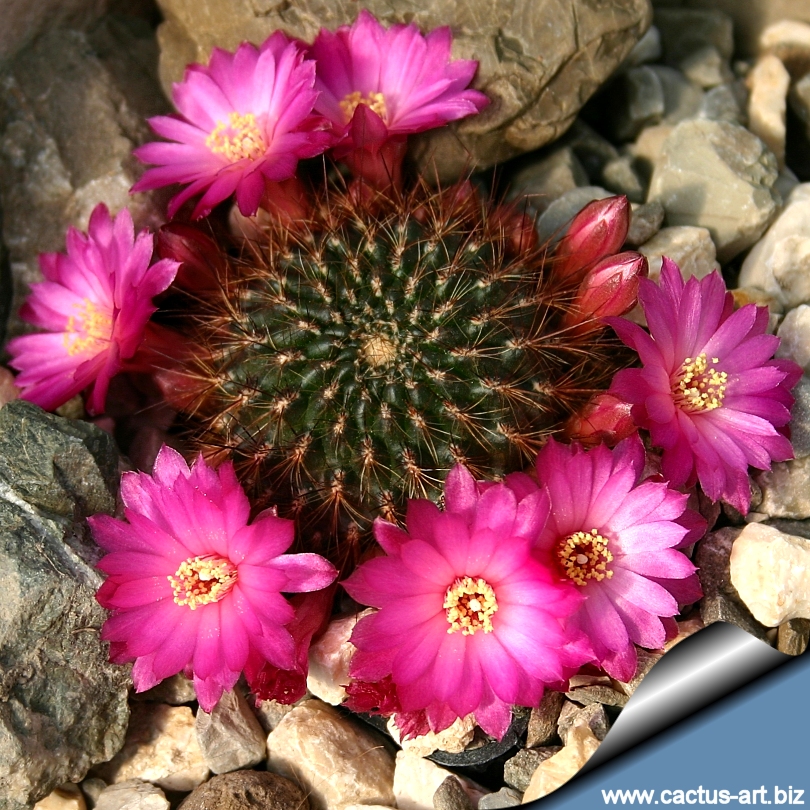
Sulcorebutia tiraquensis var. aguilarii
HS 220 Pojo 2km, Carrasco, Cochabamba, Bolivia 2900 m TL (From the typical locality)
A beautiful variety, sought after by collectors for its attractive
mahogany
red spines and rings of light purple flowers in spring
|
Description:
Clustering species
whit
Stem: Soft globular, flattened and somehow apically depressed, very dark magenta-green.
Roots: Mostly non-succulent, fibrous roots. More than 90% of the
plant is concentrated in the stem.
Spines: Dense, erect, thin, bristle-like and
flexible, reddish to
mahogany red, often more than 20 (15-40)
Flowers: Bright pink to
light purple,
numerous in a ring at the base of the plant.
Blooming season: April -
May and remain open for up to five days.
|
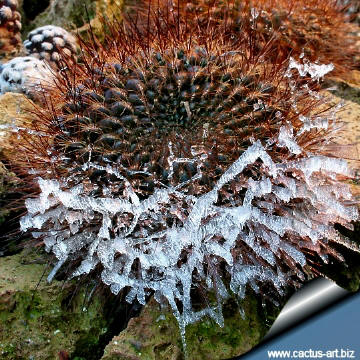
A plant covered with hoar frost in the rock garden |
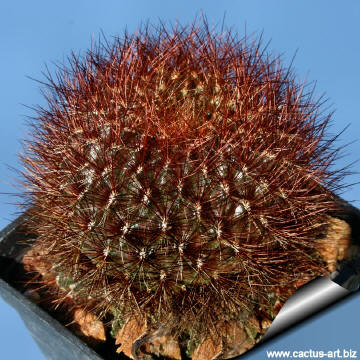
A beautiful clone with darck purple epidermis. |
|
. |
|
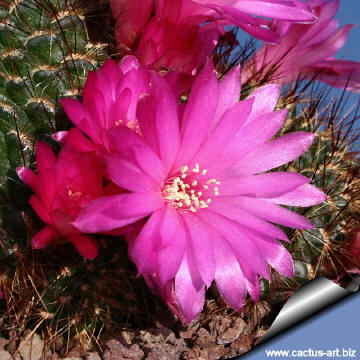 |
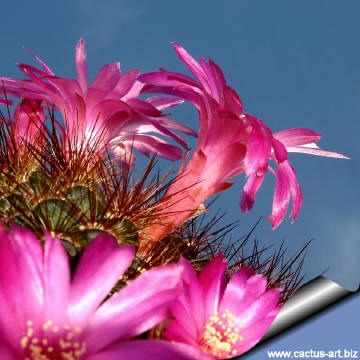 |
|
. |
|
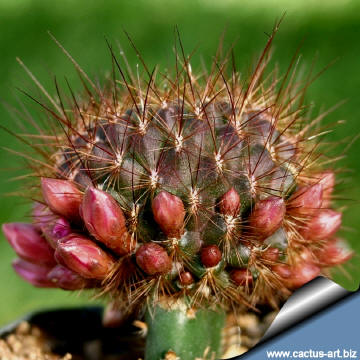 |
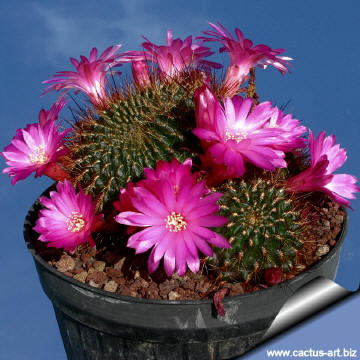 |
|
. |
|
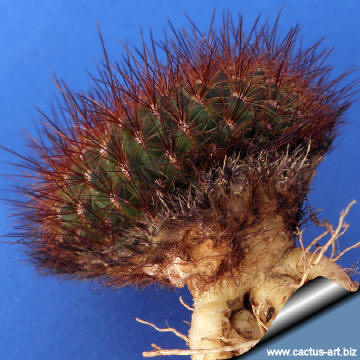 |
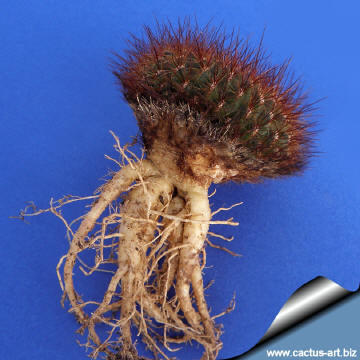 |
|
Photo of
conspecific taxa, varieties, forms and cultivars of
plants belonging to the Sulcorebutia
steinbachi
complex
(This
Taxon has lots of synonyms whit
several controversial varieties and subspecies and comprises a multitude
of different forms, but where each form is linked to others by
populations of plants with intermediate characteristics):
|
|
Advertising
|
|
|
|
Family:
Cactaceae (Cactus
Family)Sulcorebutia tiraquensis var. aguilarii
K.
Augustin & W. Gertel
in: Augustin K., Beck S.,
Gertel W. et Hentzschel G.: Two new Varieties of Sulcorebutia
tiraquensis (Cárdenas) Ritter, Cactus & Co., 3:117, 1999
Accepted
Scientific Name:
Sulcorebutia steinbachii
Werderman 1931

Distribution:
Grows in the Cordillera de Cochabamba, in southern
Bolivia.
Habitat: S.
steinbachii grows mainly on a flat, dry, stony area, while
the tiraquensis populations grows in a moister zone.
Altitude 2950 – 3900 m.
Ecology: Thanks to the fog banks coming from
the tropical lowlands of the Chaparé, the plants have enough humidity
all year round to capture with their numerous spines.
Conservation status: Listed in
CITES appendix 2.
Synonyms:
-
Sulcorebutia tiraquensis v. lepida fa. Aguilarii
- Sulcorebutia
aguilarii n.n.
-
Sulcorebutia steinbachii subvar. aguilari
W. Gertel, Kakteen und
Andere Sukkulenten 47 (6): 135, 1996A
|
|
|
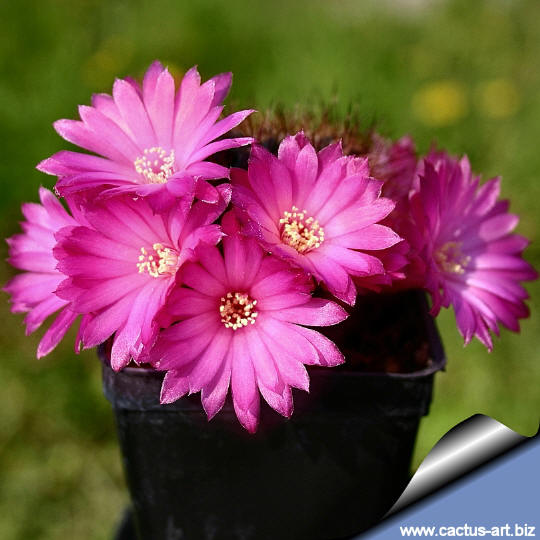
|
|
Cultivation:
S. tiraquensis
are easy plant that grow
large clumps and form beautiful specimens with time. During the summer
it is best to keep the plants outside where the temperature can rise to
over 30 C with no harm to the plant.
It loves a very
permeable, coarse
mineral soil.
From March onwards the plant will begin to grow and watering
should be increased gradually until late May when the plant should be in
full growth.
Water regularly during the summer so long as the plant pot is allowed to
drain and not sit in a tray of water. During hot weather you may need to
water the plants more frequently so long as the plant is actively
growing. From late September watering should be reduced to force the
plant to go in to a state of semi dormancy, by October you should be
back in to the winter watering regime .
From November to march they must be kept strictly dry since they are very
sensitive to any
moisture excesses.
To prevent
rottenness it is also advisable to surround its
root neck by very rough
sand or
grit, this help a fast water
drainage and an appropriate
air circulation.
For its
sensitive roots this species is often
grafted to avoid root problems.
Plants are
and quite
frost hardy -10 (or possibly colder)° C but
preferably
overwinter in a cool place (at 0/10°C) this is important for the
flowers as well as for plants
health. Without this cool winter period they normally wont get any
buds.
Sun Exposure:
Need full sun avoiding only the harshest summer sun, if kept too dark
they may become overly lush and greener and could be prone to rotting
due to over watering.
Feeding may not be necessary at all if the compost is fresh then, feed
in summer only if the plant hasn't been repotted recently. Do not feed
the plants from September onwards as this can cause lush growth which
can be fatal during the darker cold months.
Propagation: Seed,
cutting,
grafting.
|
|
NOTE:
Sulcorebutia steinbachii is one of the most variable
cactus species. The colour of the flower, the spines length, the body
shape and pigmentation is extremely variable, even within a population.
There are also many localized phenotypes capable of maintaining their
separate identity, even though only a few kilometers apart and by former
authors considered as separated species and varieties. They are nowadays
considered just phenotypes of a highly polymorphic specie. These
subpopulations are not only morphologically based but also
geographically and can be grouped as follow:
Group 1a: Cochabamba to
Chapare, northward and eastward to Tiraque
-
Sulcorebutia glomerispina
-
S. tuberculato-chrysantha
-
S. polymorphaS. kruegeri
-
S. hoffmannianaS. glanduliflora Card. n.n.
-
S. cochabambina
-
S. steinbachii & vars. australis, gracilior, etc.A
Group 1b: Province Tiraque to Epizana an
eastward to Comarapa, 2,800 m-3.000 m.
-
Sulcorebutia tiraquensis
& vars. longiseta
- S. spinosior & aglaia (bicolorispina)
- S. lepida
- S. krahnii
Group 2: Cerro Tunari-south
and east of Cochabamba-Izata to Anzaldo, 3,400-3,900 m
-
Sulcorebutia verticillacantha
-
S. tunariensis
-
S. taratensis & var. minima
-
S. mizquensis
-
S. pojoniensis Rausch n.n.A
Group 3: West of
Cochabamba-Ayopaya, 2,000-2,500 m
-
Sulcorebutia arenacea
-
S. candiae
-
S. menesesii & vars. kamiensis
-
S. muschii
-
S. glomeriseta
Group 4:
Around
Totora and southward toward Epizana, 2,600-3,000 m
-
Sulcorebutia oenanthaA
-
S. totorensis
-
S. pampagrandensis
Group 5: A limited area around Pasopaya and eastwards, 2,000 m
-
Sulcorebutia cardenasiana
-
S.
langeri

 |
|